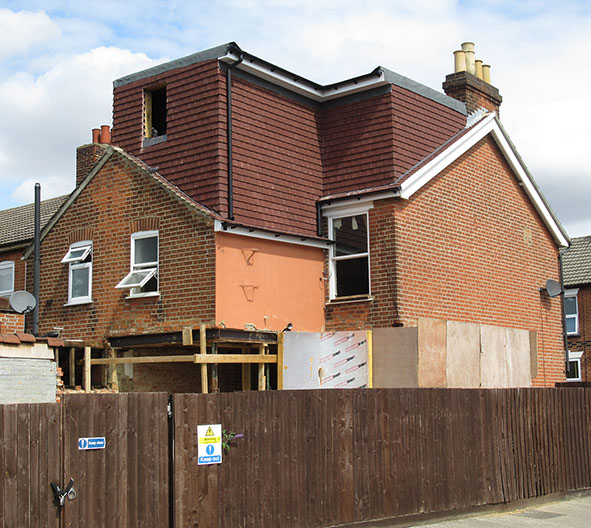- Screen Colours:
- Normal
- Black & Yellow
You may have noticed some criticism of the local authority elsewhere in this Newsletter but there are departments within the Council where praise is due. One such case is Planning Enforcement. In simple terms, in Ipswich you cannot get away with much; planning violations rarely escape the eyes of the Planning Officers (or occasionally Ipswich Society members).
An all too frequent breach is the use of sheds in rear gardens for commercial activity, and this comes in a number of similar, but different forms. Either a second, third or more sheds are erected to meet the demands of the business (and ‘sheds’ here could mean kennels and dog cages), or an over large shed which not only occupies much of the available space but it is used for the storage of commercial goods which then attract an increase in vehicle movement.
Most of these cases present some initial difficulty, they are inevitably an individual entrepreneur just starting a business (which is to be encouraged), doing it from home (which is usual) but expanding too quickly thus causing a nuisance to the neighbours.
The enforcement office also acts to have banners removed when they are advertising a product or an event at premises other than where the banner is displayed. Generally banners can be displayed for 28 days but only outside the premises to which the advert relates.
Enforcement officers have also been effective in ensuring that the conversion of small terraced houses into multiple occupancy is done so with consideration and respect for the adjoining property owner. This is a difficult one as a loft conversion, with the dormer window (or larger) on the rear elevation, allowed under permitted development.
The rule was introduced to make it possible to extend the home to accommodate a growing family; it has been misused by some unscrupulous developers who have converted two up, two down houses into units for as many as nine unrelated occupants. One toilet, one small kitchen, no common room and each bedroom little bigger than a single bed.
That, in itself doesn’t contravene planning regulations but, as you can see in the photograph on page 10, the removal of the kitchen walls leaving the back bedroom hanging on very little support does cause concern under building regulations and probably contravenes health and safety legislation. Work on the property illustrated was stopped when the HSE issued a prohibition notice.
In a similar case elsewhere in town the developer had removed what they considered to be ‘their half’ of the shared chimney stack (and the chimney breast below), without any thought as to how the remaining part of the stack would remain standing.
The case receiving the greatest amount of publicity was a listed property in Silent Street, the owner being summoned to the Magistrates Court early in 2019 to account for the alterations made without consent. He admitted eight counts of contravening planning law on a building of special architectural or historic interest, extensive areas of early nineteenth century decorative plaster having been removed and other unauthorised work carried out. He was given six months to carry our restoration work to the satisfaction of the Conservation team. Having failed to meet the Court’s requirements the building owner was back in court in July and was fined £20,000 with a similar amount in costs (and narrowly avoiding a custodial sentence).
 Photograph by John Norman
Photograph by John Norman
An interesting (and expensive) case involves a partially built back garden development – see the photograph. In 2016 the original planning application was refused because the proposed house was simply too big for the site, it was poorly designed and was contrary to the National Planning Policy Framework.
The developer tried again in August 2019 but by now had convinced himself that the new version would be acceptable so started building before the planning committee had made a decision. This version of the proposed property was also refused, however the building was by now up to chamber floor. A third application, this time for a smaller property was considered by the Planning Committee at their November meeting. This was approved meaning that the foundations and partially built external walls will have to be removed before this latest design can be constructed.
The enforcement team in Ipswich deal with perhaps 200 cases each year, varying between change of use, works to trees protected by preservation orders, unlawful advertisements and breaches to the granted permission.
John Norman